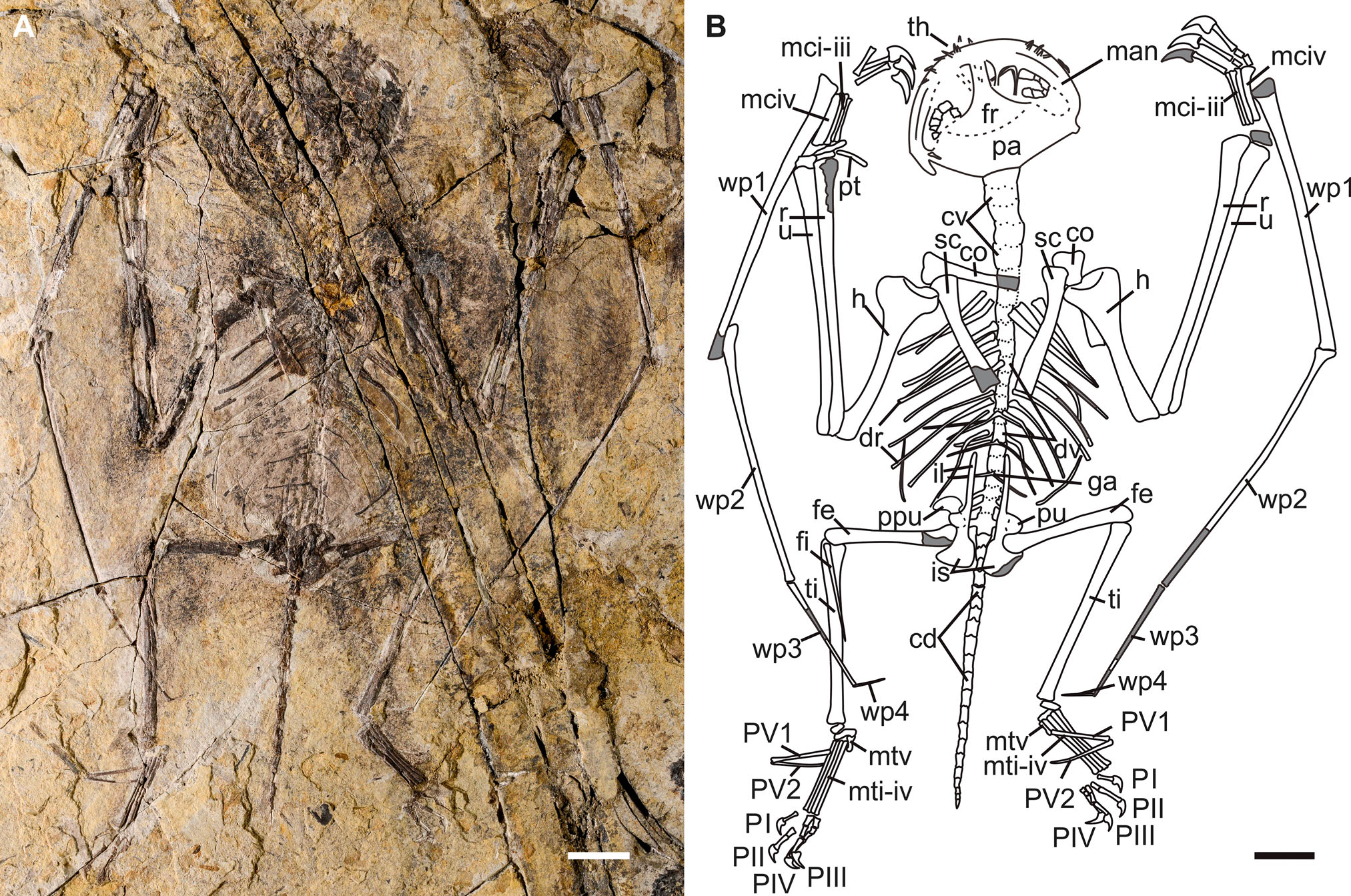Back when I was working on my big review of all anurognathid pterosaur specimens and their taxonomy, I realised that at least a couple of then unnamed specimens were probably distinctive and warranted naming.
One of them was a rather small, and not especially well preserved skeleton, that despite being nearly complete and with rather poor conditions to the bones, had extensive soft tissues. The preservation of these (both wings and filaments) had been the basis of some work on the specimen and not knowing what else might be going on, I dropped some of the authors a line to ask if they had any interest in the taxonomy of the thing and what they might be planning to do about it.

As it happened, Zixiao Yang was indeed looking further into this as part of his PhD and was putting together a dataset on anurognathids to look at their growth. Having also been looking at this area in pterosaurs too they were kind enough to invite me to join them, and this work is now out.
The first thing to note is that we find that the specimen in question is indeed a new taxon and is named Cascocauda rong roughly translating as the fluffy ancient tail. For an anurognathid at least it has a rather long tail and hence that was chosen to be a key part of its new name. In terms of its relationships, we find it to be with the recently named Sinomacrops and Batrachognathus with all the other anurognathids forming a clade as the sister taxon to this group. We actually got this result using two different versions of the phylogenetic codings of which more in a second.
In addition to this more ‘basic’ work, the main part of the paper looks at the ontogeny of anuroganthids as a whole. While work that I’ve done (and plenty of others) have noted that a lot of pterosaur traits seems to be isometric and basically unchanging with growth, a) we don’t know how true that is of all taxa and b) if it’s not that’s potentially a big problem given how many taxonomic and phylogenetic traits we use for pterosaurs based on things like the ratios of the wing and leg bones.
So this is something we looked at here with the anurognathids, though with the rather odd caveat that we basically took the group as a whole rather than looking at the ontogeny of a single species (since that’s basically impossible). But if the anurognathids are as conservative morphologically as we think that they are then this is a reasonable approach to take and is certainly worth a look.
We do find that various bits of anuroganthids vary with size in some interesting ways though perhaps the most interesting is the length, and especially width, of the skull. They are called frog-mouths for a reason and that big gape is a key feature yet larger anuroganthids have a proportionally smaller skull. That points to both adults and juveniles having surprisingly similar head sizes and suggests that they are feeding on relatively similar sized prey even as they themselves get rather bigger.
Some other traits also appear to change during growth and could well be throwing off analyses that have used these characters when trying to piece together their phylogeny so these were removed or recoded in the analysis. As it happens this didn’t actually make a real difference to our results, but it’s nice to know that this isn’t apparel screwing up the relationships of the anurognathids at least, though it’s going to be something to keep an eye on in future when looking at pterosaur phylogenies given the number of taxa represented by only juvenile animals.
I’ll leave things there and won’t go into more detail since the paper is easily accessible and that will be the place to go for more details.
Yang, Z., Benton, M.J., Hone, D.W.E., Xu, X., McNamara, M.E., and Jiang, B. 2022. Allometric analysis sheds light on the systematics and ontogeny of the anurognathid pterosaurs. Journal of Vertebrate Paleontology.

Recent Comments